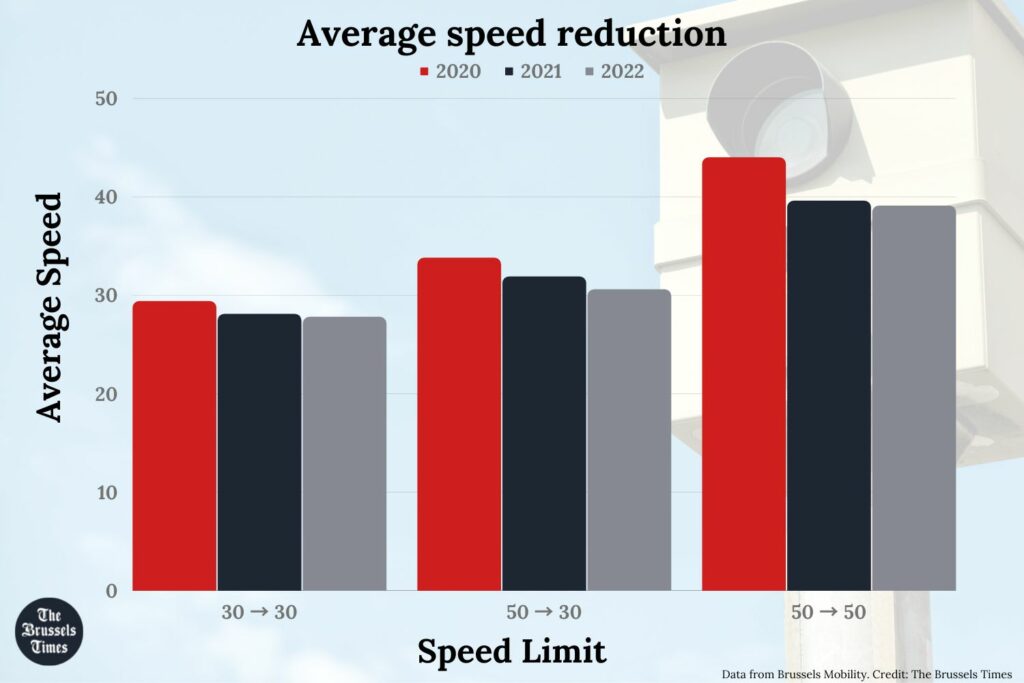After two years of the Brussels-Capital Region's 30 km/h speed limit on nearly all streets, the initial sharp drop in the average speed on the city roads continued for the second year in a row in 2022 – indicating a real change in motorists' behaviour.
Brussels is experiencing "a visible and constant" decrease in the average speed on all roads in the Capital Region, regardless of whether the speed is limited to 30 km/h or 50 km/h, the newest figures comparing results for November 2020, 2021 and 2022. As this is true at all hours of the day, even at night, it indicates "a real change" in the behaviour of road users.
"A first noticeable decrease was observed immediately after the introduction of City 30," said Brussels Mobility data scientist Korneel Debaene in a press release. "It is interesting to note that this effect persists and even intensifies, with an even slightly lower average speed in 2022."
The analysis of route duration does not indicate an increase in rush-hour journey times when 2022 is compared with 2019 (pre-Covid).

The average speed even dropped on roads where the speed limit was not lowered.
While the number of deaths and serious injuries in traffic is increasing throughout Belgium – including in Brussels – the effect of speed reduction on the safety of road users is clear if the figures for the different modes of transport are analysed separately.
There is a continuing downward trend in the number of pedestrians killed and seriously injured in traffic, with the figures for the third quarter of 2022 being the lowest ever in Brussels since 2004. For car occupants (both drivers and passengers) and users of motorised two-wheelers, the figures are rising but are still below pre-pandemic figures for now.
The least favourable is the rising number of accidents involving scooter users and, to a lesser extent, cyclists. This, however, should be seen within the context of the huge increase in the number of scooter and bicycle users as well as trips.
More speed reductions to come
Meanwhile, Brussels Mobility is continuing discussions with the 19 municipalities about the speed limits on various axes, and may still implement changes as a result – such as at the end of the Avenue de Tervueren, where the speed in both directions was reduced from 70 to 50 km/h in December.
This year, a dozen streets are concerned; speeds will be limited to 30 km/h on Avenue Bordet between Avenue du Bourget and Rue d'Evere, Avenue Couronne in Ixelles and Avenue Churchill in Uccle, among others.
Related News
- Zero tolerance for speeding in Walloon Brabant
- 'Road safety is not always easy': Brussels must stick with Good Move plan
- Speed checks: Brussels police fined 25,000 drivers over three months
Additionally, the Brussels-Capital Region has 85 fixed speed cameras (in one direction) for speeding and red light running as well as 28 new fixed speed cameras (in both directions) for speeding.
Seven longer route controls are also implemented and the Regional Government also finances the installation of six to seven Lidar speed cameras per week, on both regional and municipal roads. In 2023 and 2024, 27 and 15 new speed cameras will be installed respectively, and discussions to introduce a longer route control in the Annie Cordy tunnel are still ongoing.

